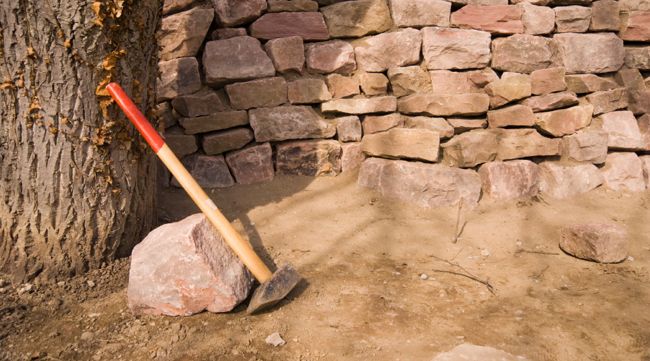
The sledgehammer is the tool of demolition workers and superheroes. Does Thor ring a bell anyone? I was stoked when he smashed the ground with it and sent that shock wave through the Ice Monster’s palace! Anyway, I digress...
This article is about the usefulness of sledgehammer training to increase upper body strength and conditioning for athletes as well as weekend warriors who just want to do something different and more manly than running on a treadmill (I hate those by the way...I feel like a lab rat).
First, here's why you need to incorporate this exercise into your program regardless of whether you're an athlete or weekend warrior. As I stated earlier, it's a great way to strengthen and condition the upper body, mainly the musculature of the shoulders, traps, and rhomboids. It is also great for taking the shoulder joint itself through its full range of motion. Another great benefit is grip strength. Football players, baseball players, hockey players, and even tennis players can all benefit from a better grip.
Two of the groups I think could really benefit from this particular exercise are tennis players and volleyball players. If you're currently watching Wimbledon (waiting for the NFL lockout to finish), you may have noticed that the serve is a very important part of the game. If you take a real close look at how a player serves, you can see very quickly how a tennis player could benefit from this style of training. I won’t go into specifics, as there isn't enough space to do that here, but I'll show you an advanced technique with the sledgehammer that will help with serve power. This move was recently reviewed by a retired tennis professional in my area and he immediately saw how it could benefit tennis players. One thing you want to remember is don't go too far on the overload principle. An 8-lb sledgehammer will work just fine for most tennis players.
Advanced sledgehammer training:
Sledgehammer training:
Now, I’m sure the next question is when should I incorporate this into my own training or my athletes’ training? Well I think the best time is after upper body days because it will increase your mental toughness and your athlete’s mental toughness if you’re a coach. Another great option is to put it in on your conditioning days, preferably after farmer’s walks if you're really sadistic.
Farmer's walk:
One of the other things I need to point out is how to hold the sledgehammer because there are two ways you can hold it. The first way is with your right hand close to the head of the hammer and your left hand at the lowest portion of the handle. The main thing you want to remember is to slide the throwing hand, the one nearest the head of the hammer, down the handle, meeting the left hand once you strike the tire. Remember to keep a firm grip on the hammer at all times. You don't want a 10-lb or 16-lb sledgehammer bouncing back on you.
The other way is the single hand chop variation that you saw in the earlier video. It's extremely important to keep a firm grip with this one, and it's a good idea to start out with an 8-lb hammer and work your way up to the 16-lb hammer (this one really tests how strong your grip is). As always, feel free to comment on this and let me know what you think.
Disclaimer: Please check with your physician to make sure you're healthy enough to participate in physical activity, and if you have had recent shoulder surgery or a complete shoulder replacement, do not attempt this exercise.








